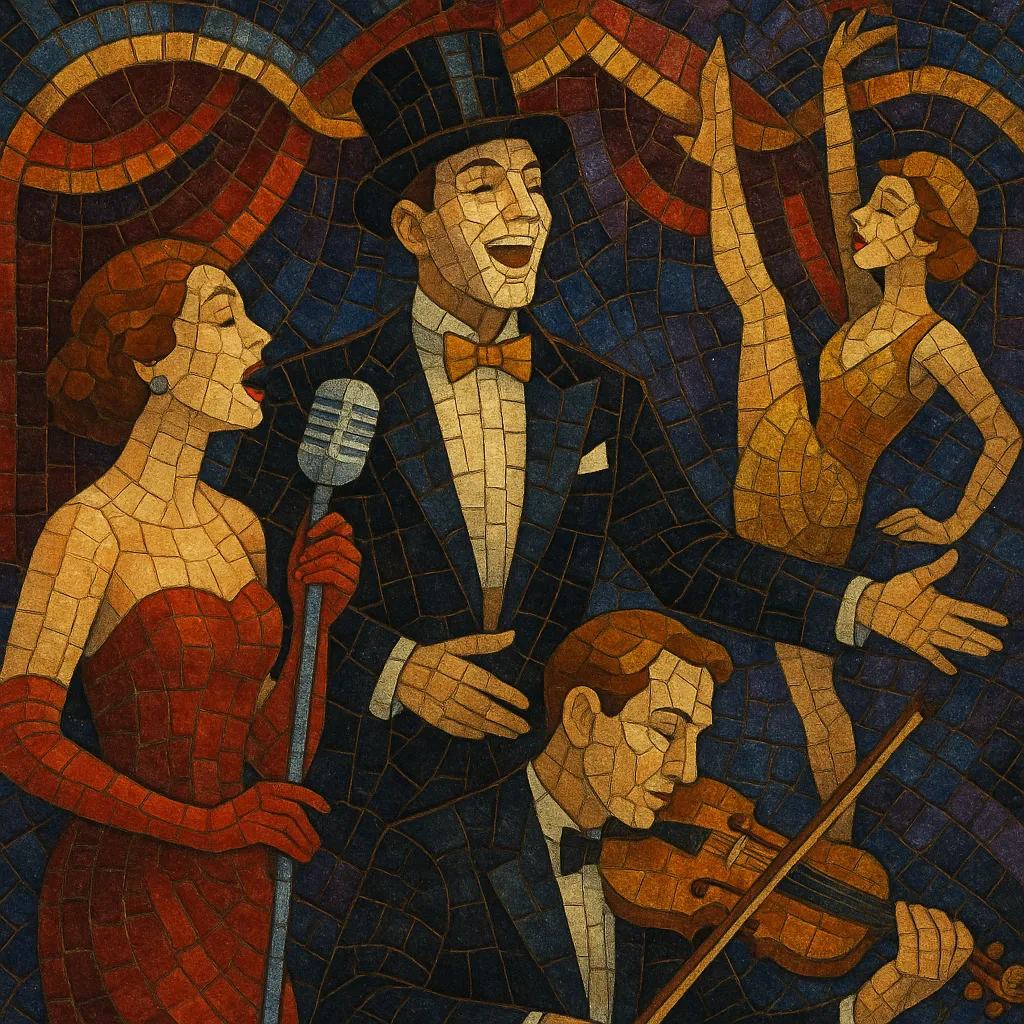Show tunes are songs written for stage musicals and revues, designed to advance plot, reveal character, or provide memorable set‑piece moments.
They favor strong, singable melodies, clear structures (often AABA 32‑bar or verse–chorus), witty and narrative lyrics, and orchestrations that support drama and choreography.
While rooted in the Great American Songbook, show tunes draw on operetta, vaudeville, ragtime, jazz, and popular songcraft, and they are typically performed by stage voices (from legit to belt) with pit orchestras.
Because many became popular standards beyond the theater, show tunes occupy a central place in American popular music and are frequently adapted for cabaret, big band, and vocal jazz.
Show tunes crystallized on Broadway and in London’s West End as musical theater evolved from operetta, vaudeville, and music hall. Early composers borrowed operetta’s romantic lyricism and vaudeville’s variety‑show immediacy, while publishers on Tin Pan Alley codified catchy, marketable song forms that could be sold as sheet music.
Songwriters such as Irving Berlin, Jerome Kern, George and Ira Gershwin, Cole Porter, and Rodgers & Hart shaped the genre’s core vocabulary: 32‑bar AABA forms, sophisticated but accessible harmony, and character‑driven lyrics. Many theater hits escaped the stage to become radio staples and jazz standards, cementing the show tune as a pillar of American popular music.
Rodgers & Hammerstein, Leonard Bernstein, Frank Loesser, and others integrated songs more tightly with narrative and character psychology. Scores like Oklahoma!, Carousel, West Side Story, and The Sound of Music exemplified dramatic integration, memorable leitmotifs, dance‑ready rhythms, and lush orchestration, while cast albums popularized original versions.
Stephen Sondheim, among others, expanded lyrical complexity, dramatic nuance, and harmonic language, influencing contemporary musical theater’s breadth—from traditional pastiche to pop‑inflected scores. Today, show tunes span classic and contemporary styles, often crossing into pop charts through cast recordings, film adaptations, and television, while remaining anchored in storytelling and theatrical performance.
Start with song forms common to musical theater: AABA (32‑bar) or verse–chorus with a memorable hook. Use functional harmony with clear tonic–dominant motion, secondary dominants, circle‑of‑fifths movement, and occasional borrowed chords for color. Strategic key changes (especially a late modulation up a semitone or whole tone) can heighten climactic reprises.
Write melodies that are singable, range‑aware for stage voices, and contour around character emotion. Lyrics should advance plot or reveal character, using concrete imagery, internal rhyme, and scannable prosody. Patter songs employ rapid, syllable‑dense lyrics; I‑want songs state a protagonist’s desire early in Act I; 11‑o’clock numbers deliver late‑show catharsis.
Default to 4/4 for clarity, with swing inflections or straight pop feels as needed. Incorporate waltz (3/4) or two‑step when character, period, or dance staging calls for it. Keep tempos actor‑friendly for diction, but allow dance numbers to push energy.
Arrange for pit orchestra: strings, woodwinds (doublers), brass, percussion, piano/keyboard, guitar/bass. Use orchestrational color to mirror scene beats (e.g., clarinet for warmth, muted brass for wit). Voices range from legit to belt; build supportive voicings below the melody and leave space for lyric clarity. Choral moments (company numbers) benefit from clear sectional writing and dynamic swells.
Align every musical choice with character objectives and scene stakes. Place musical buttons to support applause and scene transitions. Use leitmotifs and reprises to track character growth. Ensure cuts and dance breaks fit choreography and dialogue timings.
Pencil in underscoring and vampable bars for dialogue. Prepare transpositions for cast ranges and simplify rhythms where diction suffers. For standalone concert or cabaret versions, tighten intros, highlight the hook, and craft a definitive ending.


